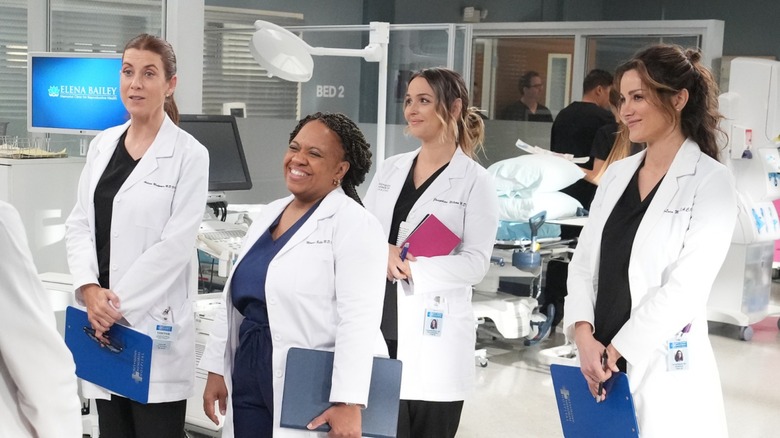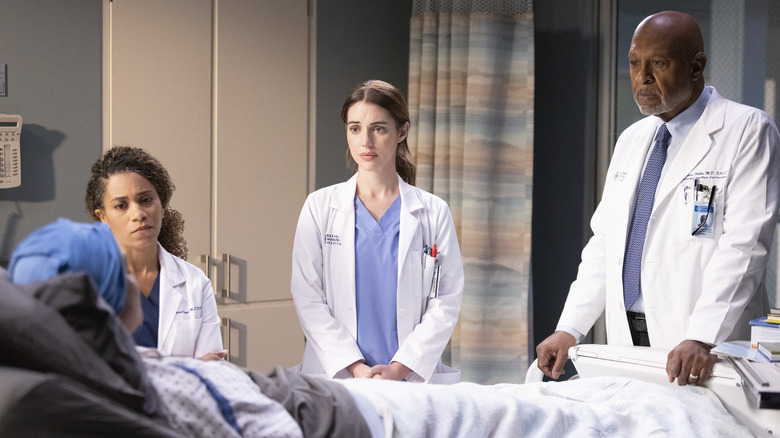Grey's Anatomy Has Actually Saved Lives In Real Life
From the get, the production of "Grey's Anatomy" was only interested in realism. Yes, the show was about dramatic romances in hospitals, and yes, they coined the nickname McDreamy. But underneath the heightened drama made famous by the series, there are real lifelines that audiences can cling to. When initially shooting the pilot, creatives were determined to create a subtle aesthetic, no matter how challenging it was to make beautiful people look like regular doctors and that legacy is still important decades later. The stories in the "Grey's Anatomy" timeline are most important, and viewers get that impression just by watching. Former showrunner Krista Vernoff told TV Line about the number of people who used the information they gained from the doctor drama in life-and-death scenarios.
"We get letters from people [that say], 'I was able to save the life of my baby because of what I saw on "Grey's Anatomy."' 'I was able to save my brother who was drowning because I saw CPR on 'Grey's Anatomy,'" Vernoff reported. "We get these letters that — I have full body chills as I talk about it — and so I'm proud of it all."
Real doctors on set helped with accuracy
Fans tune in for the steamy elevator hookups and stay for the harrowing medical trauma. That has always been the name of the game if the over-the-top moments are any indication. But, between amnesia cases and pneumonia, "Grey's Anatomy" employs real doctors to keep the realism alive. Sometimes doctors consult on the series to check if certain jargon is correct, but other times, doctors would get the opportunity to have creative control. Dr. Hope Jackson used Dr. Miranda Bailey (Chandra Wilson) as inspiration as she made a career in the surgical field. But after graduation, she took a step further by accepting a position as a medical consultant on the show. She gave input to certain scenes and was even enlisted to assist on bigger projects.
"The writers would explain what the overarching story was and the main emotional points, and I got to fill in the details about what happened to the patient medically and what complications brought them back to the OR," Jackson reflected in a blog post for UW Medicine. "This was a great opportunity to use the creative side of my brain more and depart from the formulaic scientific writing I was accustomed to." Jackson was one of many consultants on the show that helped with the accuracy and taught us what The Fray did: "How To Save a Life."

